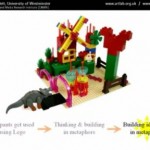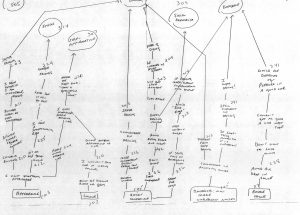What are they and why do you need them?
- ‘Projectives’ includes a wide range of techniques,
- To help participants uncover and discuss things that don’t easily come to mind,
- To give researchers more insight into motivations and emotions.
- Technique types include Associative, Metaphorical, Completion, and Construction as well as pure projectives (projecting feelings onto something or someone else)
- They also have the benefits of making research more engaging
- The value lies not in the technique itself but in the discussion which results. So you need good interviewing and probing skills to make the most of them.
The nonconscious is the new unconscious
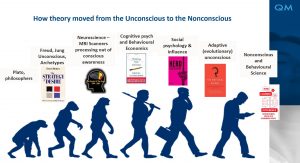 Qualitative market research has always used projective and enabling techniques for in-depth work. The rationale is to help people surface and discuss things that lie beyond their immediate conscious awareness, yet influence their behaviour.
Qualitative market research has always used projective and enabling techniques for in-depth work. The rationale is to help people surface and discuss things that lie beyond their immediate conscious awareness, yet influence their behaviour.
The original theories involved the unconscious or subconscious, and concepts from psychodynamics. But over recent decades, the development of brain scanning, neuroscience, and the rise of behavioural science has reframed these ideas as the nonconscious.
This is creating new opportunities for using projectives. The nonconscious is being talked about, and is more readily accepted than a Freudian Id or a Jungian Shadow.
The new model still requires methods of surfacing and understanding these processes. System 1 thinking consists of perceptions, impressions, emotions, heuristics. You don’t need electrodes to work with those.
Projective, enabling and observation techniques help surface the nonconscious
QMR techniques can help surface and analyse lots of things that happen outside of conscious awareness: inner conflicts, habits, social influences, cultural frames of thinking, System 1 and 2 processes, mental states, and choice heuristics.
Read on below and have a look at The Source. It contains a 3 page guide to quickly identify the right techniques and immediately link to detailed instructions on how to use them.
- Be inspired by a list of over 30 tools and techniques for more creative proposals. The Source goes beyond traditional projectives to include the Implicit Association Test, Observation and Autoethnography and Enhanced Recall Interviewing.
- The Source has a separate theory section so you can quickly explain terms like nonconscious, Systems 1 and 2 and heuristics
- Buy, download and keep on your desktop for constant inspiration
If you want an idea of what techniques are included, have a look below.
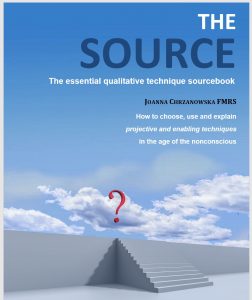 The Source,hyperlinked pdf of 140 pages, £5.99. Click here to go to shop
The Source,hyperlinked pdf of 140 pages, £5.99. Click here to go to shop
Using Projective Techniques Online
Verbal or written:
Asking participants to give Analogies or Metaphors for products, situations or feelings.
Word Association helps uncover the intuitive and emotional aspects of a brand or organisation. A more extensive version can be carried out using mind mapping.
Guided Visualisation or Brand Room – where they are taken to an imaginary planet, building or room that represents the subject of the research (usually a brand). Participants fill out what they ‘see’ in the place using their implicit knowledge and intuition.
Personification, Eulogy, School reports, and Job Application are all structured written exercises in which the brand or organisation is treated like a person, in order to learn more about the factors affecting their relationship with it.
Self-scripts are perfect for online work, since they are detailed, written individual descriptions of a scenario. They are written in the third person to provide the safe, projective element. Sentence completion is another natural fit.
Techniques that require some use of images
With the Magic Shelf respondents imagine they are in a store where the brands on the magic shelf know why people do or don’t buy them. You ask what the brands are thinking when potential purchasers come along, and how well they deliver to the people who use them.
In Storytelling (which derives from the venerable Thematic Apperception Test) a deliberately vague picture is shown. Participants have to make up a story, filling in details about the characters, their actions and their motivations.
Mood Boards are ready made collages describing a mood or feeling, e.g. putting on freshly laundered clothes. The one below is to capture the feeling of a ‘bright start’ to the day.
Techniques that require uploading and manipulation of images
You will need a whiteboard, which all the participants have access to and know how to use.
In the Balloon Game, a hot air balloon symbolising the product is weighed down by too many features. In an interesting form of prioritisation, participants have to discuss amongst themselves and throw some overboard for it to fly. Alternatives include a Life raft or Island.
Bubble drawings are cartoons of relevant situations into which the participants write what is being said, thought and/or felt.
In Graffiti people are encouraged to scribble ‘naughty’ things over the packaging or advertising.
Customer journeys: people can upload images to represent their actions and feelings at each stage.
Me maps are a type of bullseye into which the user places various brands or features, with the most important ones closest to the centre. They represent psychological or emotional distance. It’s more sophisticated than asking people to put products in order of preference as it does not assume preferences are linear.
Intuitive collage – each individual uploads images to represent their feelings about the brand or situation. In another version they can upload pictures of people who they imagine to be typical users and describe them.
Techniques that have specific online software
- Memories are not encoded and stored like tapes; they are partial, fluid and can change during the process of recall
- There are limits to self awareness, of habitual behaviour, cultural norms, heuristic decision-making, and personal traits and motivations
- A lot of stored information in the brain is visual or kinaesthetic and needs to be surfaced before it can be put into words
- There just aren’t enough words for some of the more complex situations and feelings we encounter
- There are things we intuitively know how to do, but don’t know how we know
- The verbally based processes of interviewing limit the potential for imagination, creativity and synthesis
- People need to present themselves as rational, logical, successful and so on, to protect their self-esteem
- Behaviour is affected by context, out of the interview situation
So without the use of these techniques, research can be superficial, inaccurate and misleading. Researchers use the word ‘projectives’ as a catch-all for a large range of techniques that help the process of interviewing in many ways. They make it 
- Easier and more engaging to describe things that people are willing to talk about – how does it feel when you have to see a doctor? What kind of relationship do you have with your favourite brand of shampoo?
- Safer to talk about things that people are reluctant to talk about – bad parenting, cheating in the workplace, anti-social habits.
- Possible to discuss things that are of interest to marketers and communicators, but don’t exist as concepts or ways of thinking for ordinary people, e.g. brand images, organisational values.
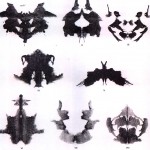
Many projective techniques have a foundation in psychology or psychoanalysis. Freud used word association, the Thematic Apperception Test used images that could be interpreted in different ways, and the Rosenzwieg Frustration Test was the precursor of the Bubble Drawing. Sentence Completion has been used to assess personality, managerial motivations and ego development.
Here you can see the infamous Rorschach Inkblot test, one of the most widely used projectives in the 1960s. The images projected onto the inkblots were marked and interpreted by psychologists. In market research the participant is encouraged to explain what they have produced and what it means to them. Not all projectives literally involve projection – some are more about association, metaphors, collaging, storytelling, structuring or grouping.
The main purpose of projectives is to move the conversation to a deeper level – and it is this that matters more than the technique.
If you are not used to using them, you need to prepare
1. Prepare the respondents
To avoid it coming as a surprise or shock mention in the introduction that you may be doing some ‘exercises’ as a way of understanding the subject more deeply. Then, when the time comes, explain why you might want to do it – for example:
“We have been talking for 40 minutes now and it’s been really useful; and I’m wondering if we couldn’t get even more stuff if we approached the subject a bit differently – from a visual angle, let’s say.”
2. Prepare Yourself
Allow enough TIME in your discussion guide. At a practical level, make sure you have all the necessary materials. If it’s your first time, rehearse what you are going to say and how you will say it. Be prepared to DEMONSTRATE if necessary (without prejudicing/directing). You need to feel and act confident and comfortable. If you aren’t, your respondents will know, and it will put them off! Don’t attempt a technique you don’t believe in, or wouldn’t be prepared to do yourself. Be prepared for individuals to ‘refuse’ – remember the Code says people don’t have to answer questions if they don’t want to. Ask them to observe and join in the discussion afterwards. For example:
“Of course I understand if you would rather not do this. It would be really useful if you could watch and then join in the discussion afterwards. It’s the discussion that’s most important.”
3. Get the timing and atmosphere right
Word Association and Mapping can work very early on in a group, but many of the other techniques need the group to have bonded, be relaxed and trusting (the ‘performing’ stage). One of the main reasons why they go wrong is that they are introduced too early.
4. Create the right mood
Some techniques need the moderator to be energised and enthusiastic – word association, for example. Others, like creative visualisation, need people to be relaxed and internally focused. So put yourself in the right mood before you start the technique. Raise or lower your energy level, your voice, your rate of movement. They will mirror you and pick up the mood from you. At base, just sound confident and encouraging.
5. Give clear and concise instructions
These are technique specific. You will find key instructions for the techniques below. Aim not to talk while handing out papers, pencils etc; wait till you have their full attention.
6. ALWAYS get respondents to interpret what they’ve done
Allow time for respondents to feed back. Use your usual skills of non-directive probing to reveal the thoughts, feelings, and motivations behind what they’ve done. And encourage them to share and develop the themes that have emerged.
The simplest technique of all is to use projective questioning – not how do you feel, but how do people feel? Participants won’t necessarily admit to loving their old tracksuit bottoms, evading fares on the train, listening to cheesy music … whatever is not socially unacceptable or not cool. So a question phrased as ‘why do you think people like 1970s disco? will be far more successful than the direct approach.
Its possible to group the different techniques by how they work, although a number of techniques could be in more than one category. You will notice that some techniques are just variations on others, leading to the point that YOU CAN MAKE UP YOUR OWN. Feel free to adapt.
Association techniques Require a quick, intuitive response, to bring to mind vocabulary, image and product attributes, to scope out a subject.
- Word association, X Rays
- Intuitive Collaging, to give more emotional and cultural associations, or just simply picture sorts.
Completion techniques Require preparation of sentences or scenarios. You would be looking for more specific information than with association techniques.
- Sentence completion
- Familiar formats like obituaries, job applications, school report – mostly used to quickly gather an evaluation of a brand or organisation.
- Letter to a brand
Construction techniques These mostly require a stimulus for focus; people are asked to create a story from a picture, scenario, brand or other starting point. They are usually more extensive than completion techniques and the structure of the story can be analysed as well as its content. Useful for context and the bigger picture around an issue.
- Storytelling /Fairy tales, Serious play (with Lego), Guided visualisation (Brand Planet /brand Room, HQ visit). Collaging fits in here too.
Pure Projective Techniques
- Fill in bubble drawings, dialogues to look at relationships with people, products, brands or organisations
- Magic Shelf
- Blob Tree
- Self Scripts
Structuring techniques In these techniques we learn by asking respondents to move elements around, put them in order, to compare and contrast, and to discuss their perceptions and reasoning. Some of these also help with accurate recall of a situation.
- Mapping,Me maps, Planetarium
- Kelly Grid (and Laddering)
- Snakes and ladders
- Balloon game
- Timelines/ Customer journeys/ Process Mapping
Expressive techniques These are projective in as much they take inner feelings and express them outwards, by translating them into another modality, paper and pen, 3D models, acting out.
- Role play, Psychodrawing, Serious play, Clay modelling. Not to mention simple re-enactment.
Metaphors & analogies Bring meaning by describing something within the framework of something else
- Personification, Brand family etc
- You can use Fairy tales and Films if you suspect there might be some archetypal content
Intrusive/disruptive techniques These are intended to disrupt normal habits or patterns of thinking. Graffiti encourages people to be ‘anti-social’ about advertising, while product deprivation or saturation for people to re-examine their views and habits.
- Advertising graffiti,
- Product deprivation, saturation
Much of the time, the usefulness of projectives lies in opening up new ways of seeing and talking about issues, so the material generated by them is content analysed as normal. However there are some general analytical questions you might want to ask when looking at the results of projective techniques:
1. Content: what themes are there? What are your hypotheses about why it didn’t emerge before? What theories might it link into? What are the barriers or defence mechanisms in place and why? What states of mind and ways of thinking do they suggest?
2. Meaning: what kind of personal significance might it have? What role does it play in people’s lives? How does it make life richer, more meaningful? What metaphors are implicit or explicit?
3. The symbolic and cultural aspects: Where else can you see these colours, symbols, themes? What do they relate to in our society in general /the respondent’s reference group in particular? Do the stories reflect any myths or archetypes?
Please note that you will not find much evidence on the reliability and validity of projectives when used in qualitative market research (QMR). The papers about them usually end with a call for more research. The paper referenced below is both a useful summary of the academic positions on projectives and guidance on a rigorous analytic process. I believe it’s from the Academy of Marketing but it’s not clear who the authors are.
Word Association
This is pure System one thinking – quick and associative. BE theory (availability bias) says that people tend to rate things that come to mind more easily as more important. The psychoanalytic approach would say that significant pauses or odd associations are more worthy of investigation. Take your pick.
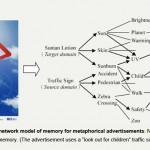
You use a key word, usually the brand or product name, to generate a set of associations. According to Keller in Strategic brand Management (1993); brand image refers to the set of associations linked to the brand that consumers hold in their memory. Brand associations help the consumer to process, organize, and retrieve information from memory to aid product choice. Word association helps provide the brand association structure.
You can use X Rays when you are trying to ‘see through’ a brand or a name. Its still association (verging on metaphor) but this time you ask for specific things – verbs, types of music, colours etc.
Intuitive Collage
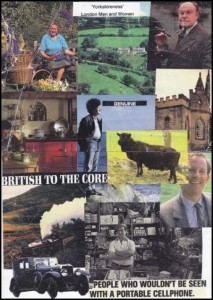
How it works
A picture is worth a thousand words, and this technique harnesses the power and flexibility of visual imagery. Finding pictures which feel right for a brand or organisation enables consumers to find elements they would not normally be aware of or able to articulate. However it is important to translate the pictures back into words at the end, so that you and they have a shared meaning from the exercise.
Collage accesses brand associations,memories, emotions, user imagery; echoes of pack design and advertising as well as heritage aspects of the brand – it is very powerful. It can also be used for understanding emotions and abstract concepts- instead of getting participants to collage about a brand ask them to do it about ‘when your team wins’ or your organisational culture.
The example shown left is a summary collage of the concept of ‘Yorkshireness’, created for a Yorkshire based brand. Yorkshire is as up-t to-date as anywhere in the UK, but respondents who live outside Yorkshire see it as intensely traditional, resisting modernity and with uncompromising values – very useful for a brand that sells a traditional product. (Interestingly, when the exercise was done in Lancashire, a long standing rival, the values were still traditional and uncompromising, but a lot more negative!)
Collage as a Customer Journey
- Define the stages of the customer journey
- Put up a separate flip chart for each or use a roll of lining paper
- Ask people to pick images that represent their feelings at various stages, and to attach them to the appropriate stage
- Stand back and discuss – not forgetting to capture the insights
Picture Sorts
You can do picture sorts as in the first stages of a collage; having people pick images they associate with the subject and explain them. Some research agencies have sets of picture sorts whose meaning has been validated across countries and here the interpretation is less about the respondent and more about the semiotics.
Sentence Completion
Some people are surprised to discover that sentence completion tests have been used to assess personality traits (Rotter Incomplete Sentence Blank), managerial motivations (Miner Sentence Completion Test) and ego development (Washington University Sentence Completion Test). However these tests have been widely used and validated, which is often not the case in QMR.
The first part of the sentence (the stem) sets up the context or the issue and then the respondent fills in the rest from their own attitudes or feelings. If it is done quickly enough you may well be accessing System 1 thinking – immediate impressions and associations, although you will also get System 2 responses.
Obituaries/ Job Applications/ School reports etc.
These use a well-known format to provide structured information about a brand or organisation. (Obituaries are included for brands that people feel very negative about because traditionally they focus on the good points.) Or you can do an obituary to find out what people would miss about a brand if it was no longer around.
Obituary
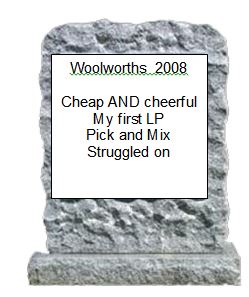
You can do in visual format, or you can ask them to write a review of the life of the brand and imagine all the good things it has achieved. They can make up what they don’t know.Finish by saying it will be missed and give a reason why.
Job applications can be filled in individually by respondents. They are the potential employer and the brand is applying for the job of being their mobile phone, headache relief, whatever.Give respondents a sheet with the categories, such as:
- Previous experience/ education
- References
- Strong points
- Reasons for leaving last job
- Times when you have shown initiative
- Salary expected
And they fill in what the brand would say. You can use School reports, dating ads – any format your respondents would be familiar with.
Letter to a brand
Simple but powerful, especially if is been a long relationship…… Describe how it was when you first met, how you feel now and what future prospects are for the relationship.
Brand Contract
Ask respondents to think about their initial expectations of the brand/product “I expected you to……. You said you would give me……” and then to write about whether it has been fulfilled or not. Not only good for brand values but also for identifying latent consumer needs.
Storytelling
How it works
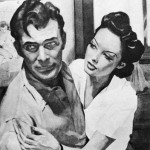
- The Thematic Apperception Test (TAT) relied on giving people images of ambiguous situations and asking them to tell the story of what happened before, during and after the scenario depicted. The stories were analysed for themes and imagery relating to specific motives. The scenarios are dated now (and some look a bit creepy) but the principle works with any image that can form the basis for a story.TAT’s are also known as projective story exercises, and can be easily used in online research. There is a paper from Anderson Analytics showing a more sophisticated usage of the technique that includes content analysis of 300 stories http://www.andersonanalytics.com/index.php?page=white-papersYou start with an image or a scenario relating to the research issue, and ask participants to create a story around it. By using the structure of a story (characters, plot, action) you use a familiar method to understand image led and emotionally led stimulus material. Stories invite involvement and allow self-projection.
The story itself is not the point. You are looking for:
- A broadening of understanding about the brand personality or the brand values
- Signs of emotional involvement with the characters and what that means for the brand
- Identification with aspects of the story or the brand (self-recognition/ aspirational identification/ image identification)
- Diagnostics – identification of any executional problem areas, guidance in casting and characterisation, and an understanding of the role of props and cues in creating the desired effect.
Fairy Tales
This one is really hard to classify, but it makes sense to put it next to Storytelling. It can be used as an abbreviated version of Storytelling – if you don’t have time to do a full version, you can ask people which childhood story/ fairy tale (or for non-readers – Disney movie) would fit with the character/scenario they think is involved. These provide a ready made story structure and often access to symbols and archetypes.
Archetypes
Archetypes are a powerful form of communication because they by-pass the logical analysis of the left-brain. We can all recognise archetypes instantly and without explanation, we know their roles and how they interact. They mediate between brands and people by providing intangible experience of meaning.
They can be used to analyse and position brands, and understand complex motivational issues.
Archetypes link to motivation and can help explain some of the intricacies of motivational dynamics. Use of archetypes requires some knowledge of them. There is more information in the Sourcebook, or you can read The Hero and the Outlaw by Mark and Pearson -subtitled ‘Building extraordinary brands through the power of archetypes’. Some research and advertising agencies routinely use archetypal systems for consumer and brand understanding.
Serious Play
(This is trademarked by Lego)
Serious Play has a slightly disarming element to it, because it uses children’s building blocks. Doing serious play together allows people to share and bond, to express abstract aspects of their experience that might otherwise be difficult to express, and of course also employs storytelling and metaphor. The act of constructing itself is a metaphor for the construction of knowledge.
When to use it
- Its great at issues involving identity or experience, both of external brands and organisations and for internal work, within companies. Its also useful for innovation and product development.
- Its definitely better as a group activity and is often used in workshops.
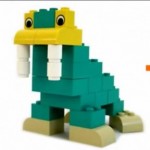
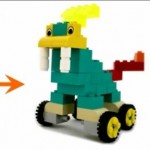
Step 3 – onto the real stuff
You start off with simple practice in the warm up, then ask them to make it more expressive, and eventually they will build models of their thoughts and feelings.
See David Gauntletts excellent video on the process (http://www.youtube.com/watch?v=LtS24lqluq0)
Guided visualisation
Participants are asked to imagine a particular setting or experience. It might be a planet that belongs to a brand or organisation, their headquarters building, or a room that conveys all the sensory experiences that the brand stands for. The moderator takes care not to give any clues about how the experience should look or feel, so what they imagine comes straight from those System 1 impressions and intuitions.
If people know what the real HQ looks like, use the planet version. The purpose is to uncover the corporate values of the brand by seeing how they are expressed in the exercise. For either exercise, you need to get the group sitting back, relaxed (three deep breaths) and ask them to close their eyes if they want to. You might want to appoint a note taker to capture the descriptions.
Note that guided visualisation can be used to take respondents into Brand Rooms, scenarios with new products, or just to relive past experiences. With the last you can use techniques from NLP (NeuroLinguistic Programming) to bring the experience into the moment.
Bubble drawings
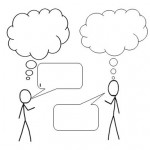
Bubble drawings are usually outline drawings of people or products, with speech, thought and sometimes feeling bubbles to be filled in by the
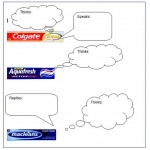
respondent, who has to project themselves into the situation. They should show the people in a neutral way so that anybody can identify with the figure. So quite often simple stick figures can work well.
The longer respondents are given to think about it the more rational and socially desirable the response tends to be.
They are a way of accessing what may be unsaid because it is impolite, unacceptable, or as yet unknown. They can also help you explore situations from different perspectives
Note that you can have various combinations of thought bubbles and speech bubbles, and that they can go on people, brands, and objects. You can have a series, where for example a person says something to an organisation, it replies, then the person replies and so on.
Magic Shelf
It’s a pure projective technique where the respondents project both their implicit and explicit knowledge about the brand onto the pack. They also reveal something of their own attitudes and usage as the brand speaks about them.
Respondents imagine they are in a store where the brands on the magic shelf know why people do or don’t buy them. You can do this as a bubble drawing or simply by holding up the products and asking people to say what the brands are thinking when they come along. Is the respondent a prime customer? Why? If not, who are they waiting for? Who will recognise their value? And so on.
The Blob Tree
Where it comes from
The Blob tree, and indeed many other Blob drawings, were developed by a youth worker called Pip Wilson.
“The Blob Tree came out of my work in the East End of London working with young people who could not or would not read. I led a large Team of People Workers as we worked with street gangs including lots of group work. The Blob Tree is about 20 years old now and is used all over the world.”
For a long time an unattributed Blob Tree was shared freely in the counselling and research communities. You may have a copy circulating in your agency. One of the originators, Ian Long, has decided to enforce copyright and does so extremely assertively. You are advised to either stop using it (you will find emojis can do a similar job in some circumstances) or buy a licence. Group and individual licences can be obtained for a reasonable fee from the Blobshop.
How it works
- The little characters in the drawings appear to be unthreatening and appear to have simply read emotions, so the respondent engages very quickly with them. This is a true projective technique in which the respondents’ feelings are projected outwards onto the characters. They therefore feel safer discussing them as the feelings now ‘belong’ to the characters.
When to use it
- It has proven to be a very flexible technique, working well with both sophisticated and less articulate respondents, and suitable for enquiring into personal emotions about a situation or an event. You will notice that a lot of the figures are about achievement and relationships; usefully, some of them express various forms of anger as well. It can be used as a prelude to other techniques that also explore emotions as it is so non-threatening.
- It is less suitable for feelings about brands or products.
PS The original Blob Tree has a hanging figure mid right hand side. If you feel it might upset participants it is easy to remove.
Self Scripts
They ask for detail about a process, which encourages self-reflection, and are written in a way which minimises self-censorship and encourages self revelation. The SCRIPT is the part that gives the detail – you are asking people to write a script for a short film that describes a scenario. The SELF part is that the writer is the main character in it -but has to write about themselves in the third person, which gives the psychological distance for safety.
They work best for purchasing or usage processes or situations, where the respondent is the main actor in the situation.
The classic paper on this: Impulse Purchasing: A qualitative Exploration of the Phenomenon by Geoff Bayley and Clive Nancarrow, Qualitative Market Research International Journal Vo1 No2 1988.
Mapping
One of the most commonly used techniques; this works with actual products, logos, or even words written on Post it notes ( if you have to do a spontaneous mapping). It literally maps the consumer’s view of a product category, by representing their classifications as physical groups of products. By moving the products, you explore the relationships between them.
You use it to familiarise or update yourself with a market, and to provide a competitive context for your product or brand.
- Establish consumer vocabulary
- How do consumers discriminate/categorise?
- Understand packaging cues
- Define what aspects of the brand/product contribute to its positioning, and assess what other products might be competitive
- Look for market gaps
- Discover where new products or brand extensions may sit in the market
Its also a great way to warm up and bond a group and to learn how people talk about the subject you are researching.
Mostly you can do it undirected – just ask respondents to “put together the ones that go together.”
You can also do a directed mapping, where you specifically ask to order them by price, or effectiveness or whatever criteria you choose.
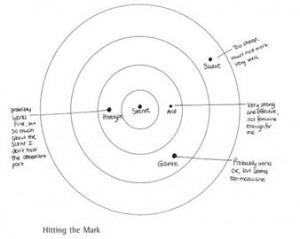 Closely related to this is an individual technique called a Me Map, which is like a bullseye. The respondents are asked to place the products or brands on this, with the ones they feel closest to in the centre. They then discuss their choices.
Closely related to this is an individual technique called a Me Map, which is like a bullseye. The respondents are asked to place the products or brands on this, with the ones they feel closest to in the centre. They then discuss their choices.
Another version is the Planetarium, which is like planets orbiting the sun. In this case the sun is a hypothetical ideal brand, and the other brands are placed closer or further away.
The illustration shows a version called Hitting the Mark from Moderating to the Max.
Kelly Grid
Also known as the repertory grid, this is an individual technique which enables you to understand what discriminations people make between products (or services, or indeed other people), and to rate them by the discriminating factors (constructs). It helps organise information respondents are aware of but also surfaces discriminators they did not know they used.
It is based on the work of George Kelly, founder of Personal Construct Theory and it has found favour in a great variety of fields because it provides a way of understanding people’s perceptions without prejudging the terms of reference. Unlike a conventional rating-scale questionnaire, it is not the investigator but the interviewee who provides the constructs on which a topic or product is rated.
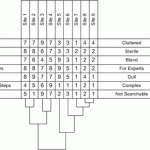
You start with the elements, the things you are comparing, and use triads to elicit the constructs on which they vary. You can then create a simple rating grid, or, you can create a more detailed evaluation instrument with numerical scales and use a range of analyses. Indeed there are a number of online programs you can use, such as Webgrid 5
There is a paper that shows the value of it in exploring topics that are not well defined: Using the repertory grid to access the underlying realities in key account relationships, Beth Rogers, Lynette Ryals, International Journal of Market Research, (2007) Vol 49, Issue 5, p 595.
Laddering (or Means End Chain)
Not a projective technique at all but a very powerful interviewing technique that really gives insight into nonconscious processes, which is why it’s included here. Its developed from Personal Construct Psychology.
Laddering shows the links between the basic attributes of a product (or organisation), their higher benefits, and the core needs and values they meet.
You start with product attributes, and by asking ‘why is that important to you?’ move up to another level of benefits or consequences. As you keep asking ‘why’? you end up with the core motivations (core constructs) for buying the product. An example of a research ladder in progress is below. The basic attributes for laddering are at the bottom (Ladders always go UP), then there is a chain of benefits, going from the more practical to the psychosocial, and ending with the core values.
Note with laddering that its the journey – not the destination that matters. The insights are along the way. Although laddering is an individual technique, multiple ladders can be coded and combined for analysis. (The numbers in the image are codes.)
Laddering is deceptively simple and those who know it, love it.
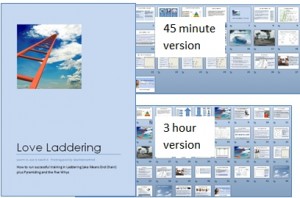
Laddering can be used:
- During any kind of interview to save time on analysis
- As a pilot study to power up your topic guides
- As a complete research method
- As a thinking tool for planning and analysis
Its so valuable, it now has its own training pack, so that everybody can learn to love it, use it and teach it to others. Examples include analysing the communication of presidential candidates, selling package tracking software, UX, segmenting drivers and there are links to the original papers where possible.
Snakes and Ladders
Or Chutes and Ladders as its known outside of Europe. Based on: Snakes and ladders marketing Understanding brand choice and relationships, by Stephen Phillips ESOMAR 2006
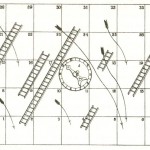
This is an extended metaphor for the decision /purchase process – importantly it does not assume a linear process. It helps record what helped progress towards the goal (Ladders) and what setbacks there were (Snakes). Ladders will include both information obtained and decision-making heuristics, while snakes will be realisations that something was unsuitable, unwanted or unaffordable.
Best in a depth interview when you are following a longer process for purchasing a major item, and you want to capture all the disappointments, blind alleys, changes of mind etc. that happened along the way. Harder in a group, as each person’s process will be different.
The Hot Air Balloon Game
It’s a playful and engaging forced choice situation that allows people to access their intuitions and feelings as well as the conscious, rational reasons for choice.
It also works against a cognitive bias called Loss Aversion- a version of it is called Keeping Doors Open (see Predictably Irrational by Dan Ariely). People don’t like closing down options in a decision process- even if those options have relatively little value. So if you don’t force a choice, people will leave in all sorts of options they would never really use.
When to use it
A When respondents are not being clear about their reasons for choosing one brand over its close competitors. It helps identify the weak spots in otherwise strong brands. It also increases the energy in a discussion and is particularly useful as a summary at the end of a group. Don’t use it for endorsing or parent brands; it gets confusing because people will bring in subsidiary brands to the argument instead. “I wouldn’t get rid of Nestle, they have a bad image with the baby milk and all that, but they make some really nice coffee – the one in the green jar. Alta Rica.”
B You can also use it to look at the trade-offs between features – especially when there are lots of features (e.g. on a mobile phone)
Customer Journeys / Timelines, Process Mapping
These follow the principle of structuring an experience, allowing you to track and describe actions, influences, emotions, decision-points, pain points, interactions etc. They can cover years or minutes and can take different forms.
They help the respondent to remember more accurately, often creating new insights for them about their own behaviour. They help
- to simplify and redesign systems and processes,
- different departments and organisations to work together better ( at ‘baton change’ moments)
- to point out inconsistencies and confusion at various touchpoints (that customers might not remember)
- find opportunities to make small improvements that could make a big difference.
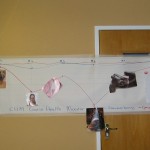
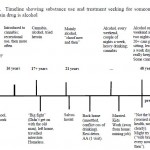
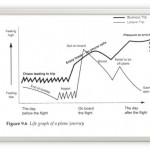
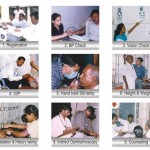
Enactment
How it works
A huge proportion of daily life consists of habits and rituals that we give very little thought to. Habits are automated sequences designed precisely to enable us to think about something else. You can put yourself back in a situation by adopting the physical position and the movements you would normally make. If you are standing up and pretending to push a trolley, you will remember different aspects of the supermarket shopping experience than if you are sitting on a sofa.
So just get respondents to act out the relevant parts of the experience, it often helps if the moderator starts and models it first.
It is not just for habits. You could for example, research the benefits of using a mobile phone to make small payments until you are blue in the face, but act it out and all of a sudden ‘much faster’ will take on a real meaning.
Role Play
It is based on the idea that stepping into a role allows a richer experience, and overcomes the tendency to rationalise. It is also safe, since players de-role at the end. Role play is used in business training to integrate learning and action, and also has roots in psychodrama.
Role play offers greater emotional depth, so it is useful when you want to know “What does it feel like when……..? and when that experience is not easy to put into words. However it does take time, so it is used more often in exploratory research.

You can do Role Play, Role Projection (where respondents become the brand), Role Drama (scenarios and stories with the brand) and Role enactment, where respondents become product and user.
Where there is ambivalence about a product or possible inner conflict, you can do a variation of Empty Chair Work, where the respondent has a conversation with other parts of him or herself.
Finally there is brand modelling or sculpture using body language or a physical tableau.
Because role play is in the physical dimension, the information you gain from it has to be put into words before you can do anything with it.The most important part of the learning is from respondent’s own experience, which they need to describe to you afterwards. You can also comment on things you have noticed, but in a non-judgmental way, to probe gently if it was significant for the respondent. E.g. “I noticed you were talking much faster when you were Lavazza than when you were Kenco. Were you aware of that?” Allow enough time for feedback and reflection after the role play, and also ask respondents again before the close of the group whether there is anything else that has come out of it for them.
Psychodrawing and Clay Modelling
Better to call it Free Expression drawing for respondents – the ‘psycho’ part can be misunderstood!
It is an alternative form of expression for feelings that are vague and hard to describe. It brings a feeling to consciousness, then enables people to verbalise it, so it translates the emotional into the verbal via the visual. Clay modelling is very similar – the respondent makes a clay (or plasticine) model of their feeling, shaping it until it feels rights, then tries to put into words what the shapes might represent.
Use it when you suspect emotions maybe complex, mixed, or hard to elicit through other means. Its useful for emotions about more abstract concepts, like political parties, online privacy, moments of anxiety, close relationships, feelings about the future.

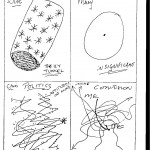 You will need the materials, plenty of time and trust, and allow respondents not to participate if they look doubtful, as long as they join in the discussion afterwards. Give them a job to do instead like handing out the crayons. Emphasise its abstract and its just their hand that does the drawing, they are not to worry about conveying anything specific.
You will need the materials, plenty of time and trust, and allow respondents not to participate if they look doubtful, as long as they join in the discussion afterwards. Give them a job to do instead like handing out the crayons. Emphasise its abstract and its just their hand that does the drawing, they are not to worry about conveying anything specific.
The first step is to bring the feelings to awareness, using a form of visualisation with inner focus.
Then they allow the hand to express the feeling using the art materials. Then you need a period of reflection and some sensitive questioning to work out what the shapes and colours might mean.
As you can see at right , it is possible to gain a lot from simpler drawings – this one was published in a paper by Peter Cooper of CRAM and represents peoples’ feelings about politics.
NOTE Other types of drawings
- A lot can be learned from people drawing users, what they remember of packaging, brand parties and brand planets – in fact many of the verbal projectives can also be drawn.
Metaphors and Analogies / Textures/ Colours
Technically an analogy is a logical argument, demonstrating that if two things are alike in some ways, they will be similar in other ways also. An analogy is a ‘like’ situation – ‘learning to do projectives is like learning to drive a racing car’. A metaphor is when one thing substitutes for another. Just leave out the ‘is like’ part.
“Marketing is war – we have targets, we plan campaigns to reach strategic objectives, we fight the competition.”
As you can see, some metaphors are embedded into the way people or organisations think; understanding this gives insight into behaviour. Imagine how differently an organisation would behave if its metaphor for action was gardening – growing loyalty, seeding new products, harvesting a crop and pruning dead wood.
Analogies come naturally to us. Our brain makes analogous comparisons unconsciously all the time as a way of making sense of the world around us. “In order to survive, humans rely upon comparing what’s happening to them now with what happened to them in the past,” write Douglas Hofstadter and Emmanuel Sander in their book Surfaces and Essences.
Analogies enable more creative thinking; they are based on similarity, so the new thinking can be relevant. The properties of the analogy shed light on the properties of the brand.
Textures and Colours
Don’t think of metaphors and analogies as purely verbal – you can use a range of textures to help people express how something should physically feel, and have a set of colour cards too.
Metaphors are also important to notice and explore because they can give a deep understanding of thought processes. See: Metaphors We Live By –Lakoff, and Marketing Metaphoria: The Seven Deep Metaphors by the Zaltmans.
Personification
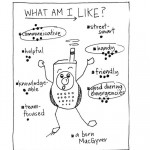
Personification is used to give life and human qualities to inanimate objects, and abstract concepts such as brands and organisations. Freud once said “If you want to understand something, personify it.” People are the most significant elements in our lives, and therefore thinking about something in the same terms helps bring out the significance. In research it is a sophisticated form of analogy/ metaphor, in which participants are asked to visualise the product/ brand/ organisation as a person, and you can find out what that person would be like.
Use it in evaluating the various dimensions of brand image, this gives the most direct access to brand personality. It is valuable in packaging research when you need to go beyond ‘cheap looking’ or ‘attractive’, to distinguish between outwardly similar packs, and when you are getting a negative reaction but you can’t understand why.
Brand Party
- This is just an extension of personification, which you can use when you have a number of brands in a product category and you want to find the relationships between them. It can also be for looking at one brand in a competitive context.
Ask respondents to imagine that all the brands have become people, and they are all at a party. Ask questions to help them imagine how the brands would behave at this party.
- Which brand would be the host/hostess? Who would arrive first?
- What kind of party would it be?
- Which ones would be in the kitchen? Who would be dancing?
- Who would be ultra cool and sophisticated? If any two of the brands met, what would they say to each other, and so on?
- Would you like to be there?
Brand Families
- Using exactly the same principles, but this time the brands are all similar or closely related (for example sub-brands of Nescafe coffee, or a repertoire of products used by the same person, e.g. biscuits) and you use the overarching metaphor of a family to discover the relationships between them and the characteristics of each.
- Who would be the father and grandfather? What type of father would he be?
- Who are the children/ distant cousins, aunt locked in the attic, etc?
Graffiti
Graffiti neutralises authority. It’s a pure and spontaneous form of self-expression; in the form of doodling its also very System 1, free flowing, uncensored. It is rarely successful used on its own, but as part of a broad spread of techniques it can add a different perspective.

It’s especially useful when a brand fits into a strong consumer culture e.g. teenage brands, but also where you might want to encourage expression of negatives or unmet needs.
You can have everyone do it simultaneously or just leave people with the paper, to scribble when they want.Put the logo, ad, or some brand images on a sheet of A4 and allow people to scribble on them with felt pens. Give them permission to deface the ad by telling them they can be a naughty person who will not get caught.
The text on her forehead said “I am being paid by a massive corporation to take away your choice about how you look”
You don’t even need to ask people to read out their graffiti (although they might enjoy doing so), but you do need to ask ‘what has this brought out that we haven’t talked about before’? If the graffiti was real, what would that mean?
Pitfalls: People fall back on drawing glasses and moustaches. But that’s OK. They had fun.
Product Deprivation /Saturation
Not strictly a projective technique but it does enable people to express things about a product or category that they had not noticed before. For Deprivation you ask people to stop doing something for a few days, (stop using cotton buds, ketchup, listening to the radio) for saturation you overwhelm them.
Product Saturation
Respondents are given 12 brands of margarine, 15 brands of shampoo, 8 brands of baby wipes (Whatever it takes for them to feel they have an overwhelming choice) and are encouraged, but not forced, to try them all during the week, recording what they notice about how they make their choices. They must be aware of the purpose of this otherwise they think it is a simple product test and will give feedback on the products, rather on their feelings about trying them.
This is not an easy to organise, simple projective or enabling technique. However it’s included because it’s potentially very powerful and is being increasingly used by research agencies to pick up attitudes that would classically come into the nonconscious category – ways of thinking, habits, prejudices that conscious minds find it hard to admit to.
How does it work?
Self-reported methods are vulnerable to biases that undermine their validity (i.e., social desirability, self‐deception, and self‐ignorance) but since the IAT depends simply on reaction time it is very hard to game. In the example from the Race Bias test in the video below you have to quickly choose a preference by hitting a key – if you spend too much time thinking about what you should put, the answer is invalid. And there are several different combinations of images and words.
It’s an online test and the software is widely available; or you can commission from an agency that already does them. The video gives you an idea of how it actually works.
A lot of development on the test was done at Harvard University, where you can try several different ones. https://implicit.harvard.edu/implicit/
You can try a commercial example here: http://www.implicitresearch.co.uk/index.php/about_us/#/index.php/try_an_implicit_test/
There is also a paper about the IAT on the Market Research Society website: https://www.mrs.org.uk/ijmr_article/article/98732
Let their fingers do the talking? Using the Implicit Association Test in market research IMJR Vol. 55 No. 4, 2013 Aiden P. Gregg, University of Southampton, James Klymowsky, Dominic Owens and Alex Perryman
Note that the review concludes it “yields consistent results, possesses predictive power, offers unique advantages and poses no insuperable challenges to adoption”. However there are other articles say it’s flawed and some of the effects are due to ‘cognitive inertia’. The arguments will continue, hopefully leading to evidence based best practice for the use of the test.
Not projective techniques and only enabling in the broadest sense, these techniques are included because they all heighten awareness of behaviour and give access to more detail than interviewing alone. They are often used prior to interviewing, or as part of a longitudinal process
Observation ranges from ‘ethnography’ (technically understanding the culture of groups and societies from an individual’s point of view) to ‘accompanied activities’ – accompanied shopping, stir-frying, baby bathing, you name it. There is a spectrum of involvement from complete observer, totally external, to complete participant; living and working with the group you are studying. In practice most market researchers are somewhere in between, both watching what happens and then asking participants to discuss it.
All of these techniques help researchers
- Analyse habits
- understand products and processes in the real world; how they are used and misused
- notice the private moments, the facial expressions, the gestures, the rituals
- see how social interactions between people can affect behaviour (respondents rarely have their friends and family around during an interview but these people have a strong influence)
- How the physical space affects usage and procedures – what is kept where, how workspaces are organised, how products fit into everyday life.
In interviews, respondents would not be able to remember the details – or even realise which ones were significant. It is mostly every day, habitual stuff they take for granted.
Autoethnography
has increased in popularity with the advent of cameras on smartphones, webcams and wearable cameras, that record the scene the participant sees every number of seconds. Most commonly participants are asked to keep a diary, a photo diary, a blog, a Vlog or simply record every touchpoint relating to the brand or every instance of the behaviour being studied – for a period of time.
Autoethnography is also more cost effective because it does not require the presence of a researcher, but it does have drawbacks, particularly self-editing. There are however ways of compensating for this.
More commonly known as a Cognitive Interview (CI). But there is confusion because there are two types and one is most commonly used for checking understanding of statements used in questionnaires. It is quite a different procedure.
This method of interviewing developed by Fisher and Geiselman to help the police take more accurate witness statements, is now used by market researchers as a method to increase insights by reinstating the context of behaviours. The quote below talks about CI and refers to the extended recall type.
“Overall, the superior performance with the CI has been very robust: The effect generalizes across cultures (U.S., England, Germany, and Australia), types of witness (young, elderly; college students and non-students; cognitively impaired or healthy), retention interval (few minutes, several weeks or years) and kind of event to be recalled (crime, accident, daily activities; for recent reviews, see Fisher & Schreiber, 2007; Holliday, Brainerd, Reyna & Humphries, 2009).The only task in which the CI has not been superior is in person identification (e.g. line-ups), where the CI was equivalent to a control interview”
While this is technically more than a technique and should be classed as a method, it is a useful addition to the toolbox because of the emphasis on context. It’s also good interviewing practice and an antidote to overfull topic guides.

